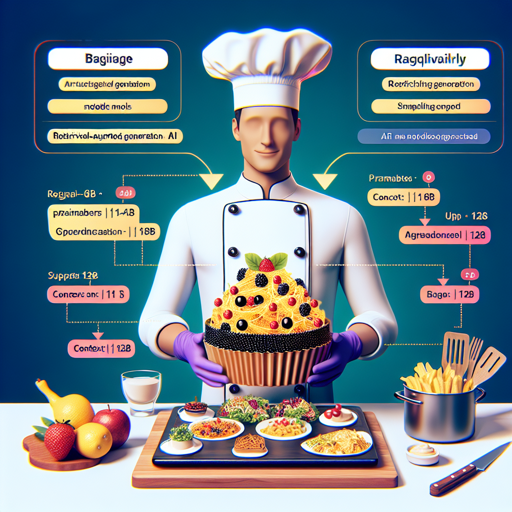The world of AI is constantly expanding, bringing forth innovative models that fine-tune our interactions and enhance usability. One such marvel is the BRAG-Llama-3.1-8b-v0.1 model, specifically designed for Retrival-Augmented Generation (RAG) tasks. In this guide, we will explore how to effectively use this model while addressing common issues you may encounter.
Understanding the BRAG-Llama-3.1-8b-v0.1 Model
The BRAG-Llama-3.1-8b-v0.1 is part of the BRAG series of SLMs (Small Language Models), specially engineered for RAG tasks that involve both tables and conversational chat. Think of it as an exceptionally well-trained chef, adept at preparing a wide variety of dishes (in this case, tasks) with the utmost precision and flair.
Key Features
- Model Size: 8 billion parameters
- Context Length: Supports up to 128k tokens
- Language: Primarily trained in English; however, it has multilingual capabilities.
Using the Model
To get started with the BRAG-Llama-3.1-8b-v0.1 model, you’ll need to follow a structured approach as outlined in the sections below.
Message Prompt Format
To interact with the model, you’ll need to format your messages correctly:
messages = {
role: "system",
content: "You are an assistant who gives helpful, detailed, and polite answers to the user's questions based on the context with appropriate reasoning as required. Indicate when the answer cannot be found in the context."
}, {
role: "user",
content: "Context: CONTEXT INFORMATION\nUSER QUERY"
}Running with the Pipeline API
For setting up the model using the pipeline API in Python, you’ll execute the following:
import transformers
import torch
model_id = "maximalists/BRAG-Llama-3.1-8b-v0.1"
pipeline = transformers.pipeline(
"text-generation",
model=model_id,
model_kwargs={"torch_dtype": torch.bfloat16,
"device_map": "auto"}
)
messages = {
role: "system",
content: "You are an assistant who gives helpful, detailed, and polite answers to the user's questions based on the context with appropriate reasoning as required. Indicate when the answer cannot be found in the context."
}, {
role: "user",
content: "Context: nArchitecturally,..."
}Think of this section as preparing the kitchen for our chef: gathering the necessary tools and ingredients to ensure smooth operations.
Running the Model on Multiple GPUs
If you’re lucky enough to have multiple GPUs at your disposal, run the model with ease using the following code:
from transformers import AutoTokenizer, AutoModelForCausalLM
import torch
model_id = "maximalists/BRAG-Llama-3.1-8b-v0.1"
tokenizer = AutoTokenizer.from_pretrained(model_id)
model = AutoModelForCausalLM.from_pretrained(
model_id,
device_map="auto"
)
messages = {
role: "system",
content: "You are an assistant who gives helpful, detailed, and polite answers to the user's questions based on the context with appropriate reasoning as required. Indicate when the answer cannot be found in the context."
}, {
role: "user",
content: "Context: nArchitecturally,..."
}
This part is similar to appointing a sous-chef; it can help manage workload effectively, ensuring all tasks progress without a hitch.
Troubleshooting Common Issues
When using the BRAG-Llama-3.1-8b-v0.1, you may encounter a few hiccups along the way. Here are some common issues and solutions to help you out:
- Performance Issues: If the model performs poorly with long context inputs, remember it was designed primarily for shorter interactions. Consider breaking longer text into smaller chunks for better results.
- Hallucinations: To prevent unexpected results, always use the provided system prompt. This helps maintain accuracy and relevance in the model’s responses.
For more insights, updates, or to collaborate on AI development projects, stay connected with fxis.ai.
Conclusion
With the BRAG-Llama-3.1-8b-v0.1 model in your toolkit, you’re equipped to tackle a variety of RAG tasks efficiently and effectively. Remember to leverage its strengths, be aware of its limitations, and inspire creativity in your applications.
At fxis.ai, we believe that such advancements are crucial for the future of AI, as they enable more comprehensive and effective solutions. Our team is continually exploring new methodologies to push the envelope in artificial intelligence, ensuring that our clients benefit from the latest technological innovations.

